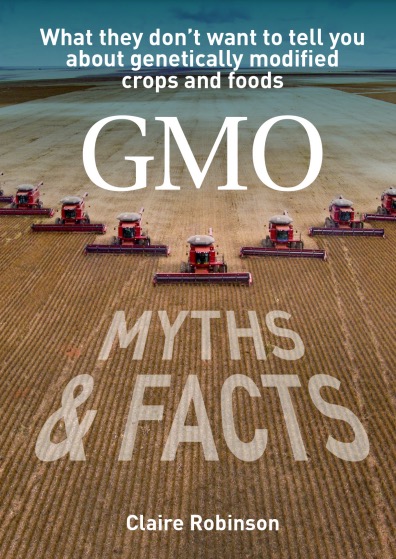Submitted by Jim Riddle
Rt. 3 Box 162C
Winona, MN 55987
May 20, 2002
In its April 29, 2002, edition, the Iowa Farm Bureau Spokesman contained an alarming story on sow breeding problems related to the feeding of genetically engineered Bt corn.
According to the article, Shelby County, Iowa, farmer Jerry Rosman was alarmed when farrowing rates in his sow herd plummeted nearly 80 percent. Rosman, who has nearly 30 years of farrowing experience, checked and double-checked all of the usual suspect causes. He tested for diseases, verified his artificial insemination methods were being properly implemented, and poured over his nutritional program. But he found nothing out of the ordinary.
Eventually, Rosman became aware of four other producers within a 15-mile radius of his farm whose herds had nearly identical pseudopregnancies. The herds had different management styles, different breeding methods and different swine genetics.
A common denominator, Rosman says, is that all of the operations fed their herds the same Bt corn hybrids.
Laboratory tests revealed their corn contained high levels of Fusarium mold. Rosman says researchers typed the Fusarium down to four strains, and two of them (Fusarium subglutinans and Fusarium monlliforme) were consistent in all of the producers' samples.
One of the producers subsequently switched back to regular non-Bt corn, and pseudopregnancy is no longer a problem within that herd.
Rosman believes the problem manifested itself on his farm because he planted 100 percent of the same brand of genetically engineered Bt seed corn and fed 100 percent of that corn to his livestock.
According to the article, Rosman isn't sure whether or not he'll be planting any corn on his land this year. An agronomist has told him that a regular rotation of corn and soybeans might not get rid of whatever gene has contaminated his corn ground.
In a follow up article on May 13, 2002, the Iowa Farm Bureau Spokesman reported that shortly after the story detailing Rosman’s situation appeared, he was flooded with phone calls. It hadn’t even hit the mailboxes and the phone started ringing, Rosman says.
By late last week he had received calls from 12 other producers from various parts of the state detailing situations very much like his own. The calls primarily came from smaller producers who, like Rosman, feed their own corn and noticed a sharp decline in farrowing rates recently.
The Rosman article sparked the interest of Norm Smith, who farms east of Winterset, Iowa. Smith says he started experiencing breeding problems within a few weeks of feeding the new corn hybrids he planted for the first time last spring.
I started feeding Bt corn in late September, and within 30 days I wasn’t getting anything bred, Smith said, adding that his brother encountered similar problems.
The Spokesman articles illustrate the fact that genetically engineered crops have been rushed to market without proper testing. There have been no mandatory tests on the long term effects of these crops on livestock or human health. For example, the EPA, which regulates Bt corn, requires no tests to determine how the crop impacts the reproductive systems of the animals that eat it.
Genetically engineered materials, such as products manufactured from Bt corn, are now commonly found in conventional foods. Due to a political decision made in 1992 by the Bush/Quayle administration, genetically engineered foods are not required to be segregated or labeled. Anyone who eats foods containing conventional corn, soy, canola, and/or cottonseed products is an unwitting guinea pig in a vast, uncharted ecological experiment.
From: "Jim Riddle" <This email address is being protected from spambots. You need JavaScript enabled to view it.>









